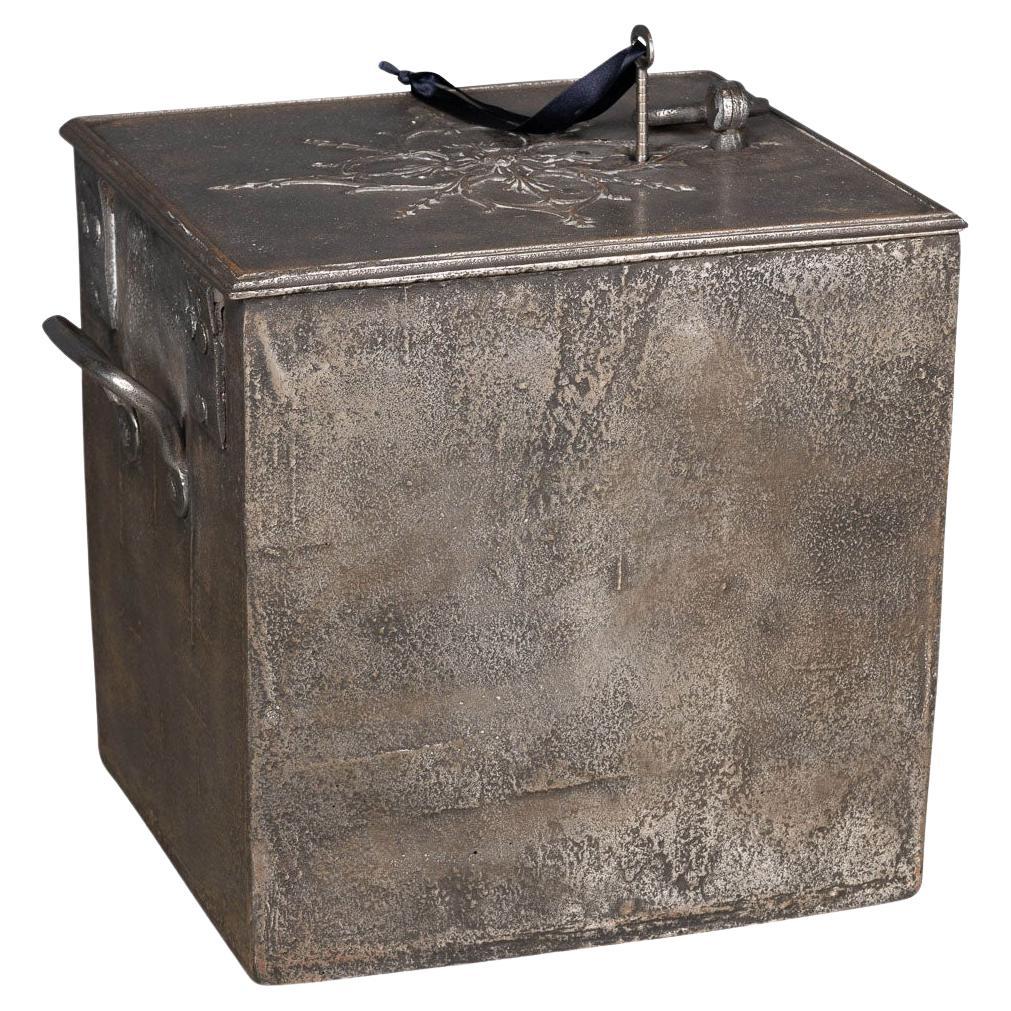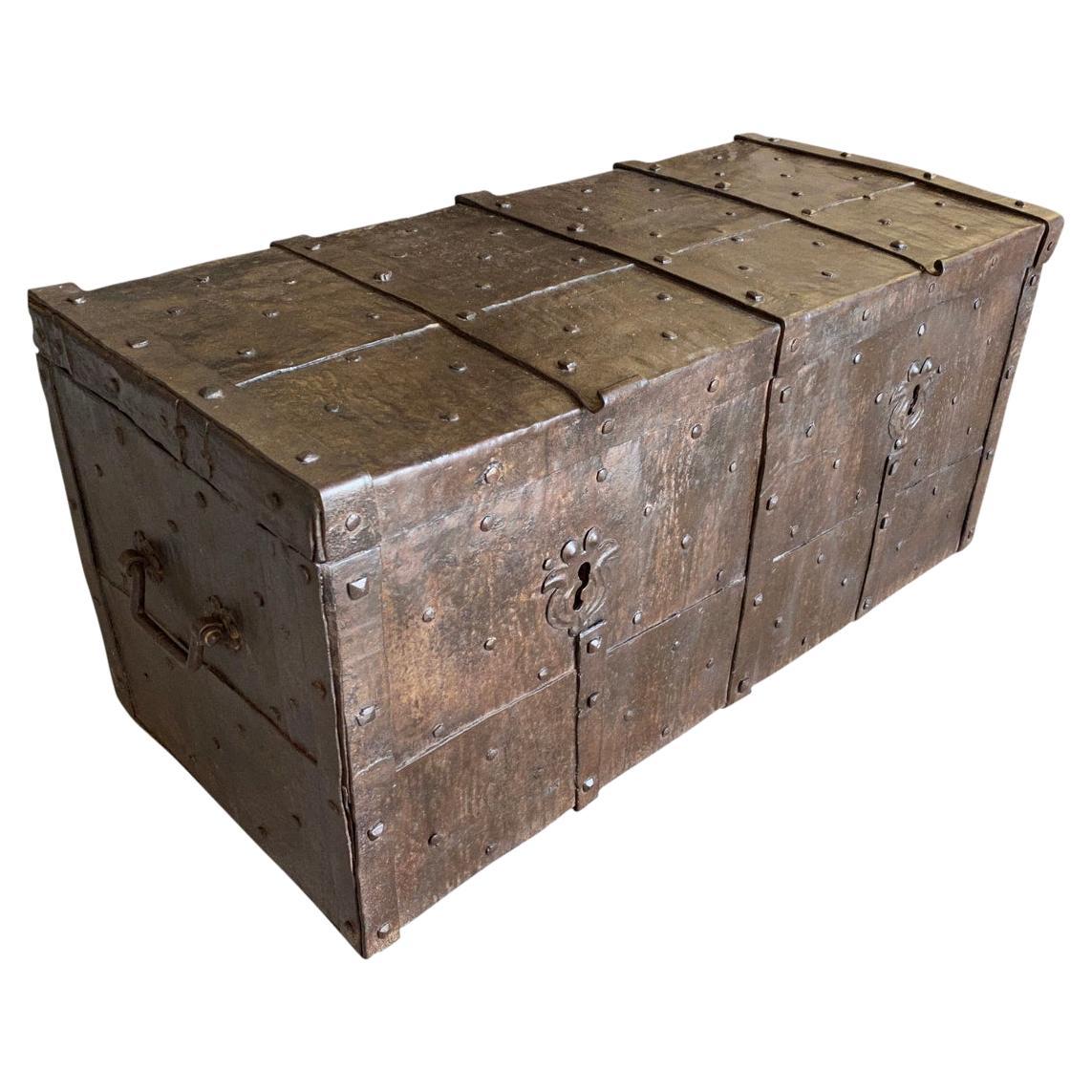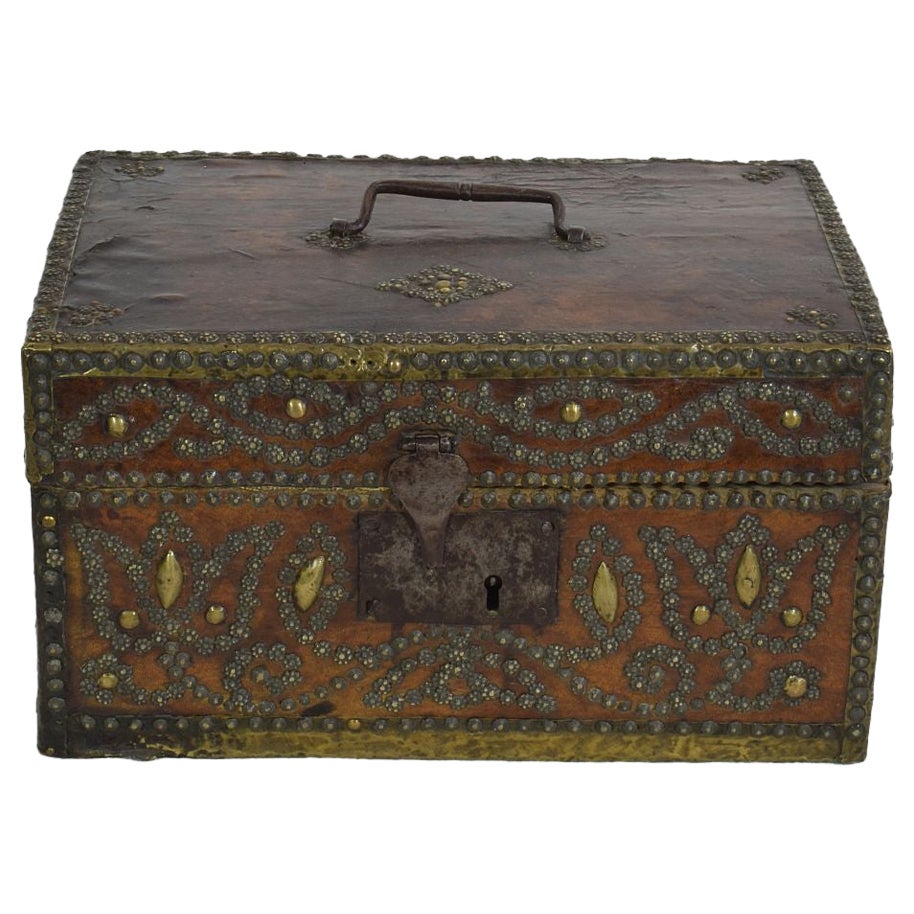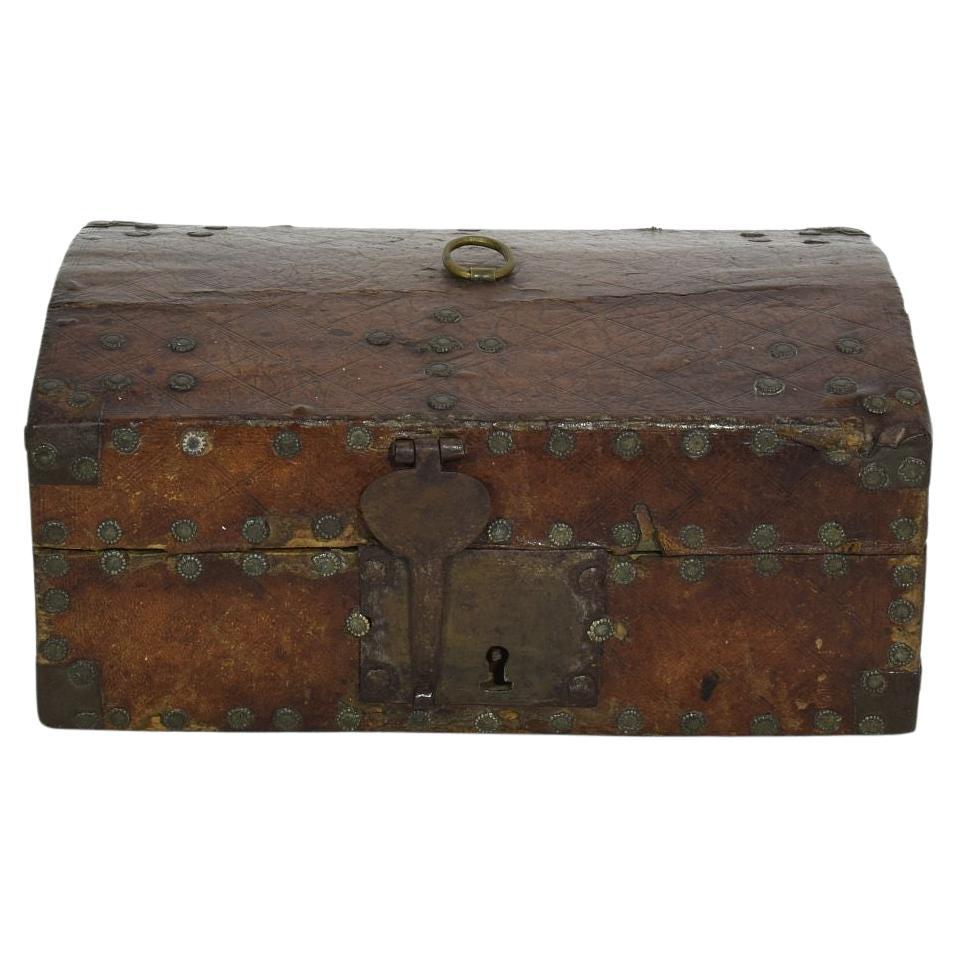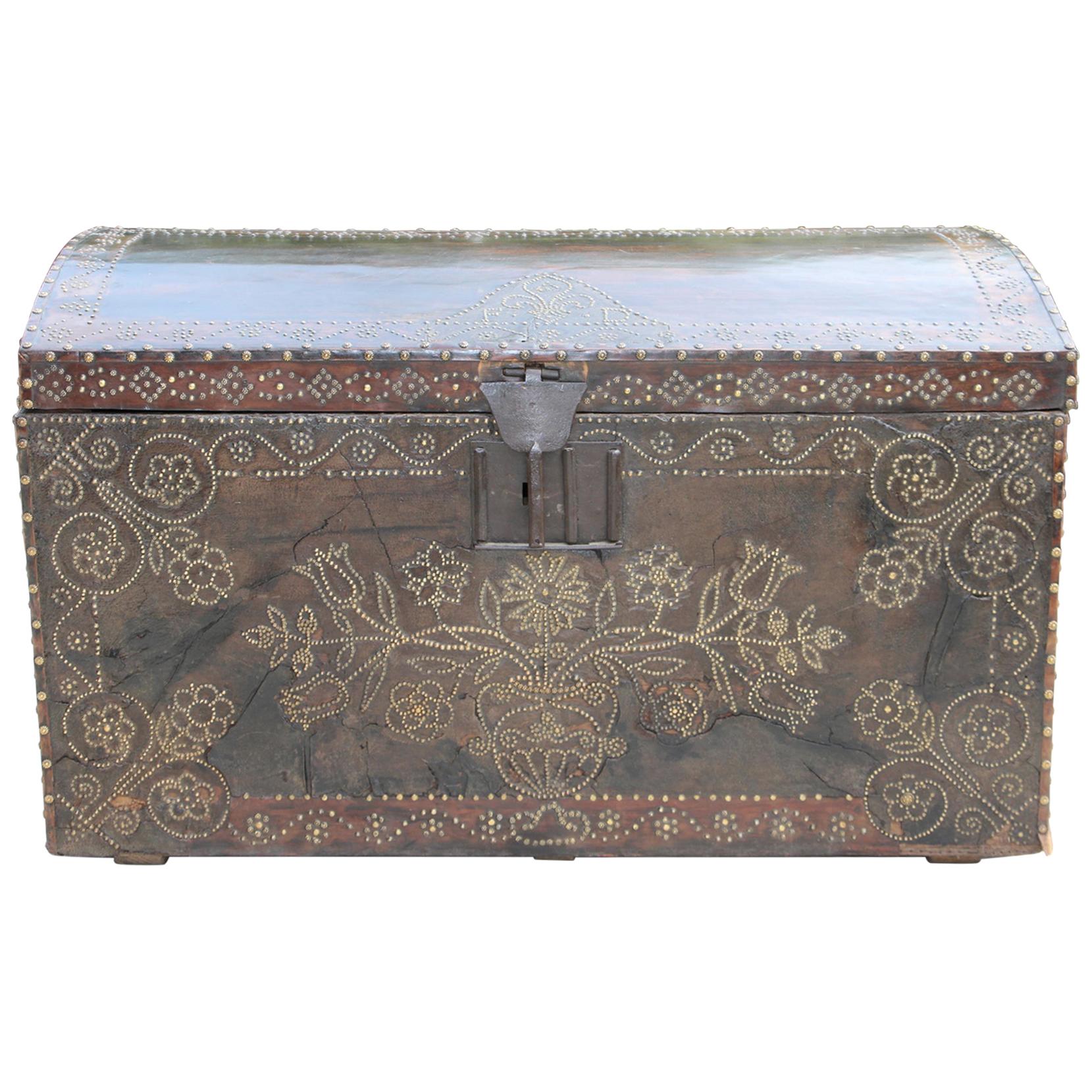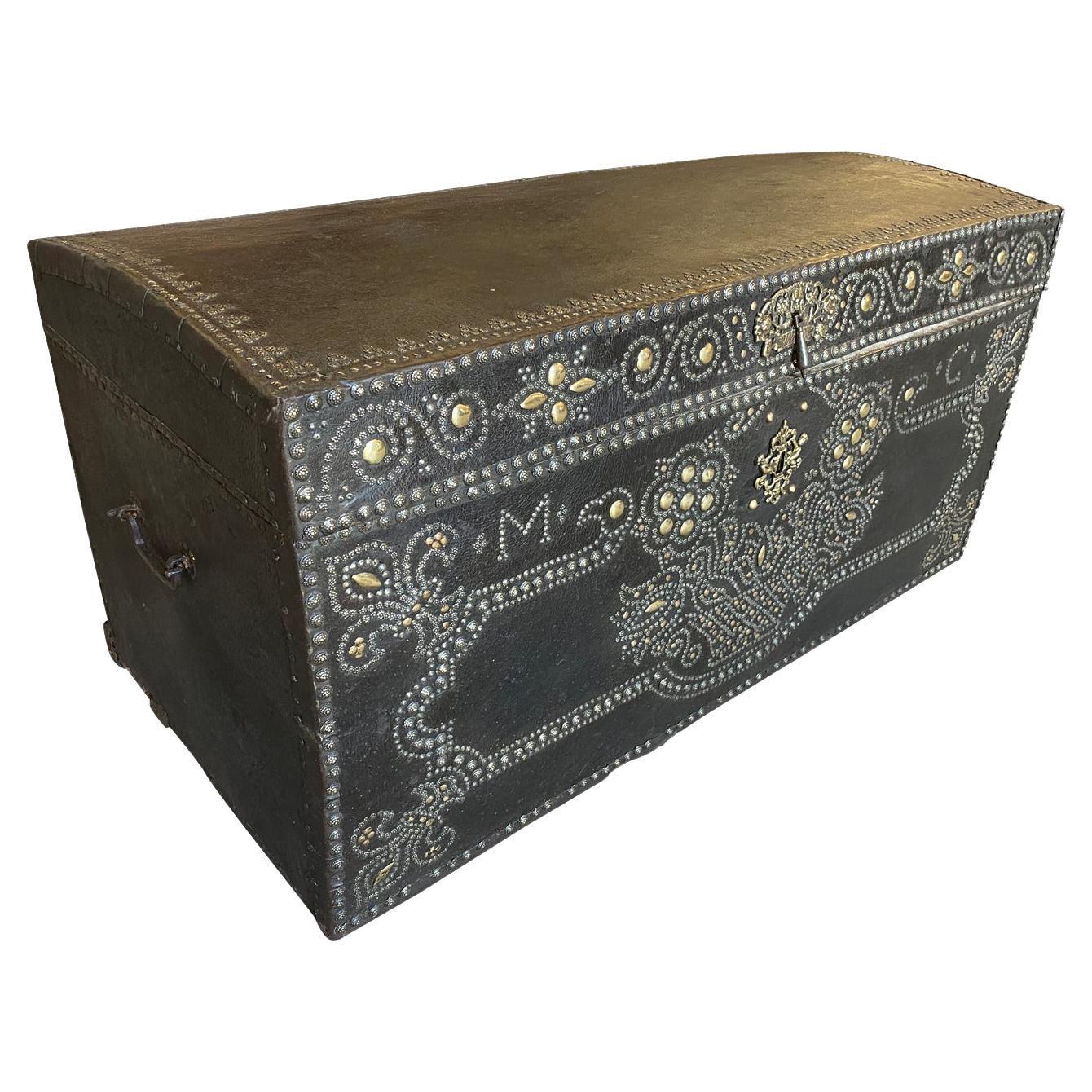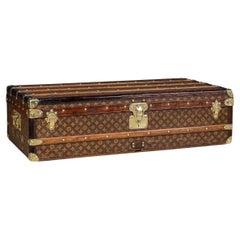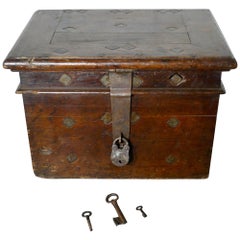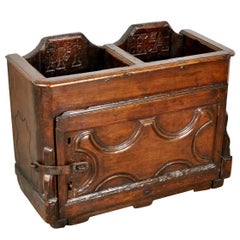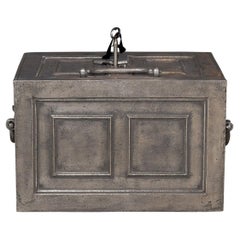
17th Century French Cast Iron Bound Strong Box, c.1690
View Similar Items
Want more images or videos?
Request additional images or videos from the seller
1 of 15
17th Century French Cast Iron Bound Strong Box, c.1690
About the Item
- Dimensions:Height: 11.82 in (30 cm)Width: 18.12 in (46 cm)Depth: 12.6 in (32 cm)
- Materials and Techniques:
- Place of Origin:
- Period:
- Date of Manufacture:circa 1690
- Condition:Wear consistent with age and use. Minor fading. In Good Condition - wear as expected.
- Seller Location:Royal Tunbridge Wells, GB
- Reference Number:Seller: D79541stDibs: LU1348228130212
About the Seller
5.0
Platinum Seller
These expertly vetted sellers are 1stDibs' most experienced sellers and are rated highest by our customers.
Established in 2014
1stDibs seller since 2015
369 sales on 1stDibs
More From This SellerView All
- 18th Century French Cast Iron Bound Strong Box, c.1740Located in Royal Tunbridge Wells, KentAntique mid-18th century cast iron travel safe. Probably manufactured in France for storing money, important documents or jewellery. It would have been taken on long travels, perhaps on a long sea voyage or on the Orient express...Category
Antique 18th Century French Trunks and Luggage
MaterialsIron
- 20th Century Louis Vuitton Trunk, France c.1930By Louis VuittonLocated in Royal Tunbridge Wells, KentAn exquisite and complete Louis Vuitton trunk from the early part of the 20th century. An absolutely essential item for elite travellers of its time the trunk is adorned in the iconic LV monogrammed canvas, accented by lozine trim and brass fittings. This trunk stood as the epitome of luxury over 100 years ago, boasting an unparalleled level of sophistication and elegance, it remains a timeless masterpiece that transcends eras. The captivating allure of the Louis Vuitton trunk transforms it into more than a mere luggage accessory; it becomes a focal point for any room. With its impressive dimensions, it is perfectly suited as a striking coffee table, side table, or even as a standalone centrepiece, seamlessly integrating into any interior, whether modern or traditional. An extraordinary piece that not only pays homage to the past but also serves as a statement of unparalleled luxury in the present. A brief history about Louis Vuitton trunks: Louis Vuitton was born in 1821 to a farmer and milliner and came from a long-established working-class family in eastern France. Vuitton grew up understanding the effects of perseverance and a strong work ethic from watching his family. At the age of 16, he made the decision to walk 292 miles from his hometown to Paris to try and make a new life for himself. When he arrived the city was in the midst of industrialization with current modes of transportation evolving quickly allowing for longer journeys. With this came the need for sturdy travel pieces. Vuitton was taken as an apprentice for a successful box maker and packer named Monsieur Marechal. He learned to craft durable containers and how to pack them properly – a well-respected profession at the time.In 1854, years after he had mastered his craft and became well respected for it, Vuitton ventured out on his own to open a shop on Rue Neuve des Capucines. It was here that he began to establish himself as a luggage maker. Then, in 1858, Vuitton designed the first Louis Vuitton steamer trunk. At the time trunks had rounded tops to allow for water to run off but this did not allow for convenient stowage. Vuitton introduced a flat, yet waterproof, trunk that was easily stackable. The first of his trunks were outfitted with a grey canvas referred to as Trianon – it wouldn’t be until several decades later that the signature monogram would be introduced. With a burgeoning business, Vuitton moved his family and workplace to Asniere, where he employed twenty workers to craft his trunks. By 1900 he would have 100 employees, and in 1914 the company would more than double in size. After years of success, Vuitton began to experiment with the design of his luggage by introducing a new striped canvas pattern (1876) and later the still well-known Damier print (1888). The hand-painted patterns were developed to prevent counterfeits. Even in the late 1800s, Louis Vuitton was enough of a status symbol to warrant counterfeiting. In 1886, his son George invented and patented an ingenious locking system that made it impossible to pick the lock of their trunks. This lock is still used today. 1892 would prove to be a time of mourning for the family as Louis Vuitton passed...Category
20th Century French Other Trunks and Luggage
MaterialsBrass
- 20th Century Louis Vuitton Trunk, France c.1910By Louis VuittonLocated in Royal Tunbridge Wells, KentAn exquisite and complete Louis Vuitton trunk from the early part of the 20th century. An absolutely essential item for elite travellers of its time the trunk is adorned in the iconic LV monogrammed canvas, accented by lozine trim and brass fittings. This trunk stood as the epitome of luxury over 100 years ago, boasting an unparalleled level of sophistication and elegance, it remains a timeless masterpiece that transcends eras. The captivating allure of the Louis Vuitton trunk transforms it into more than a mere luggage accessory; it becomes a focal point for any room. With its impressive dimensions, it is perfectly suited as a striking coffee table, side table, or even as a standalone centrepiece, seamlessly integrating into any interior, whether modern or traditional. An extraordinary piece that not only pays homage to the past but also serves as a statement of unparalleled luxury in the present. A brief history about Louis Vuitton trunks: Louis Vuitton was born in 1821 to a farmer and milliner and came from a long-established working-class family in eastern France. Vuitton grew up understanding the effects of perseverance and a strong work ethic from watching his family. At the age of 16, he made the decision to walk 292 miles from his hometown to Paris to try and make a new life for himself. When he arrived the city was in the midst of industrialization with current modes of transportation evolving quickly allowing for longer journeys. With this came the need for sturdy travel pieces. Vuitton was taken as an apprentice for a successful box maker and packer named Monsieur Marechal. He learned to craft durable containers and how to pack them properly – a well-respected profession at the time.In 1854, years after he had mastered his craft and became well respected for it, Vuitton ventured out on his own to open a shop on Rue Neuve des Capucines. It was here that he began to establish himself as a luggage maker. Then, in 1858, Vuitton designed the first Louis Vuitton steamer trunk. At the time trunks had rounded tops to allow for water to run off but this did not allow for convenient stowage. Vuitton introduced a flat, yet waterproof, trunk that was easily stackable. The first of his trunks were outfitted with a grey canvas referred to as Trianon – it wouldn’t be until several decades later that the signature monogram would be introduced. With a burgeoning business, Vuitton moved his family and workplace to Asniere, where he employed twenty workers to craft his trunks. By 1900 he would have 100 employees, and in 1914 the company would more than double in size. After years of success, Vuitton began to experiment with the design of his luggage by introducing a new striped canvas pattern (1876) and later the still well-known Damier print (1888). The hand-painted patterns were developed to prevent counterfeits. Even in the late 1800s, Louis Vuitton was enough of a status symbol to warrant counterfeiting. In 1886, his son George invented and patented an ingenious locking system that made it impossible to pick the lock of their trunks. This lock is still used today. 1892 would prove to be a time of mourning for the family as Louis Vuitton passed...Category
20th Century French Other Trunks and Luggage
MaterialsBrass
- 20th Century Louis Vuitton Trunk, France c.1930By Louis VuittonLocated in Royal Tunbridge Wells, KentAn exquisite and complete Louis Vuitton trunk from the early part of the 20th century. An absolutely essential item for elite travellers of its time the trunk is adorned in the iconi...Category
20th Century French Other Trunks and Luggage
MaterialsBrass
- 20th Century Louis Vuitton Courier Trunk, France c.1930By Louis VuittonLocated in Royal Tunbridge Wells, KentAround the turn of the 19th and 20th century Louis Vuitton had established himself as a market leader in trunk making and needed to set his now famous brand apart from the imitators ...Category
Vintage 1930s Other Trunks and Luggage
MaterialsBrass
- 20th Century Louis Vuitton Cabin Trunk, France, c.1910By Louis VuittonLocated in Royal Tunbridge Wells, KentAround the turn of the 19th and 20th century Louis Vuitton had established himself as a market leader in trunk making and needed to set his...Category
20th Century French Trunks and Luggage
MaterialsLeather, Canvas
You May Also Like
- Italian 17th Century Coffre Forte, Strong BoxLocated in Atlanta, GAAn exceptional 17th century Coffre Forte - Strong Box from the Lombardy area of Italy. Expertly crafted from iron with side handles, iron strapping and nail head detailing. Serves wo...Category
Antique Mid-17th Century Italian Trunks and Luggage
MaterialsIron
- 17th Century French Coffer, Oak Silver Treasure Chest, Strong BoxLocated in Chillerton, Isle of Wight17th Century French Coffer, Oak Silver Treasure Chest, Strong Box A Very Rare piece, this Oak Coffer was made in the 16th Century in 3” thick Oak, lined inside and strengthened thro...Category
Antique 17th Century Elizabethan Trunks and Luggage
MaterialsOak
- Italian 17th Century Primitive Collection BoxLocated in Atlanta, GAA rare and unique church collection box from Northern Italy. Beautifully constructed from thick planks of walnut with intriguing carving detail. A wonde...Category
Antique Mid-17th Century Italian Decorative Boxes
MaterialsWalnut
- 17th Century forged Iron Safe strong boxLocated in Madrid, ES17th Century Iron Safe Old safe for collecting money or valuables from the 17th century in hand-forged iron and including its original key. The lock works pe...Category
Antique 17th Century Nautical Objects
MaterialsWrought Iron
$3,013 Sale Price20% Off - Small 17th Century, French Coffer or Box in LeatherLocated in Buisson, FRExtremely old box that is covered with leather and decorated with iron and brass. Rare find. France, circa 1600-1700 Weathered and some losses.Category
Antique 17th Century French Decorative Boxes
MaterialsIron
$868 Sale Price49% Off - Small 17th Century, French Coffer or Box in LeatherLocated in Buisson, FRExtremely old box that is covered with leather and metal decorations. Rare find. France, circa 1600-1700 Weathered and some losses.Category
Antique 17th Century French Decorative Boxes
MaterialsLeather, Wood
$868 Sale Price49% Off
Recently Viewed
View AllMore Ways To Browse
Homer Jewelry
Iron Lock Key
Antique French Documents
Luggage Store
Important Documented
Travel Iron
Luggage And Travel Boxes
17th Century Jewlery
17th Century Jewellery
Antique Voyage
Voyage Antique
17th Century Keys
17th Century Cast Iron
Antique 17Th Century Jewelry
Antique Traveling Trunks
Travel Trunks Antique
Antique Travel Trunks
Antique Travel Trunks Luggage Trunks
